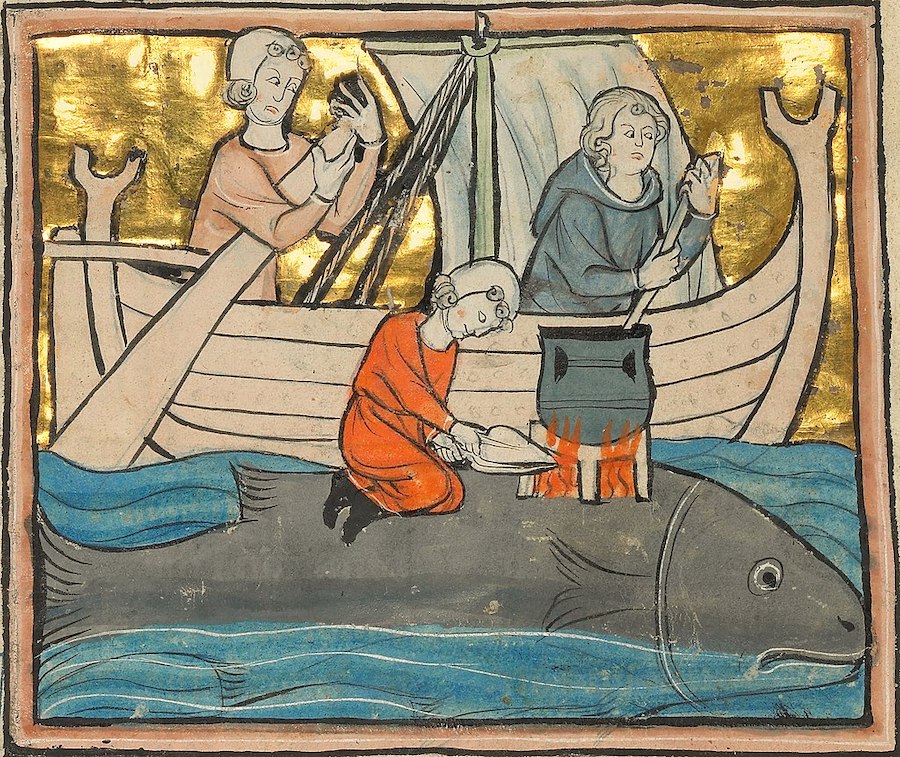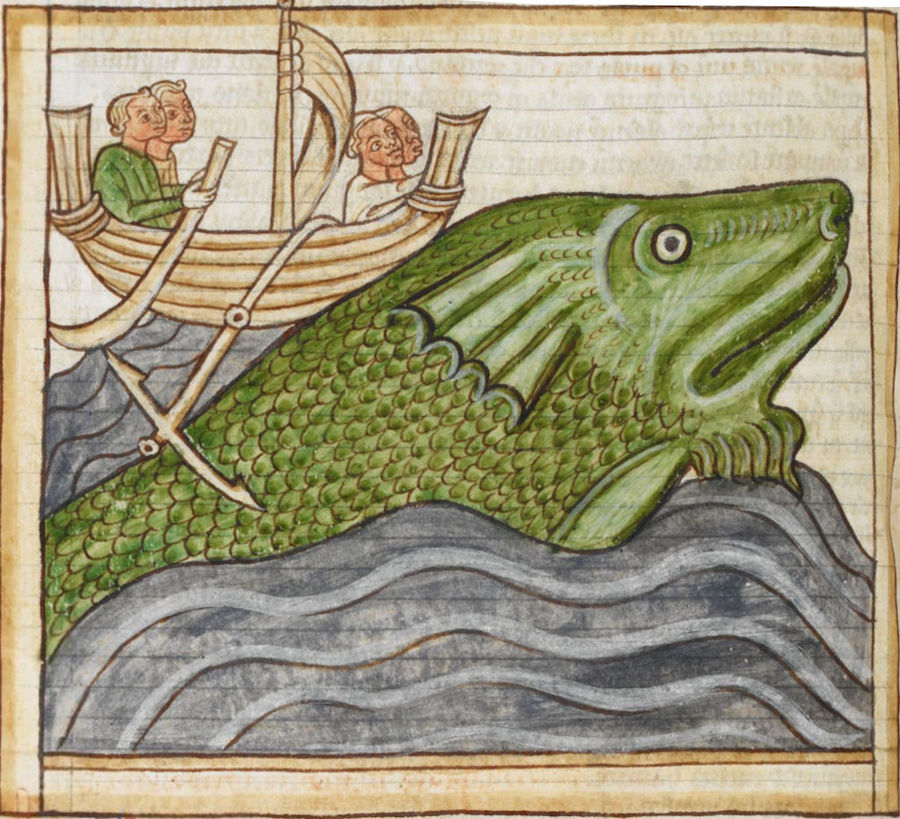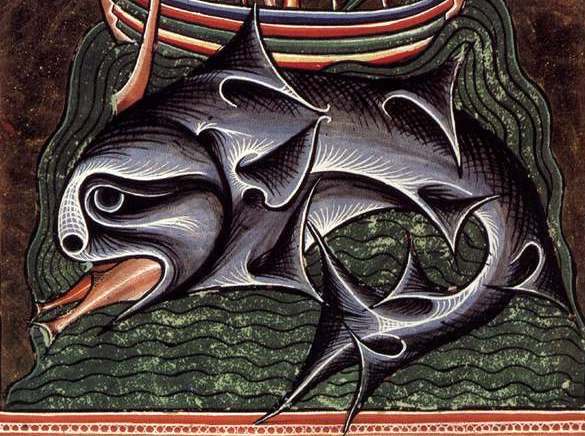Super Heavyweights: Whales
“As half of my brain struggled not to hate the highly social, carnivorous orca, I was reminded that some Northwest Native Americans regard them as the reincarnated souls of humans. This may be their way of explaining why one orca mother would allow her dead calf to slipstream with her for 17 days and then eat the tongue of a humpback calf. What other animal besides humans shows such ‘compassion’ and ‘cruelty’?”—Skip Eisiminger
Skip the B.S.
By Dr. Skip Eisiminger

I “Now the Lord had prepared a great fish to swallow up Jonah. And Jonah was in the belly of the fish three days and three nights.”—Jonah 1:17
CLEMSON, South Carolina—(Hubris)—1 July 2023—For about four million years, Leviathan swam largely unmolested up the Mississippi River as far inland as present-day Michigan. I say “largely unmolested” because orcas may have stalked them along that thousand-mile river, but there were no humans in North America until about 13,000 BC.* About 2,000 BC, when humans began building sturdy kayaks and harpoons, the hunt began in earnest especially among the Basque in the mid-Atlantic, the Japanese in the West Pacific, the Inuit in the Arctic, and the Norwegians in the North Sea. The skeleton of a blue whale, the largest of its species, indeed, the largest animal ever to swim, walk, or slither upon the Earth, made a convenient shelter once covered with reindeer pelts, and the flesh of the animal supplied all the protein, fat, vitamins, and minerals humans needed in places like Alaska and Siberia where fruits and vegetables were scarce or unheard of.
By about 1,700 AD, whale populations off the east coast of North America were so depleted, trans-world vessels capable of staying at sea for months with harpoons powered by gunpowder were required. By 1800, a single, state-of-the-art whaler could accommodate 23 whales, which rendered on average 236 tons of oil, 23 tons of spermaceti, and 4.5 tons of baleen. Spermaceti, a waxy lubricant, which was used by General Motors in its transmission oil until 1973 and is still being used by NASA (both the Hubble telescope and various land rovers on Mars depend on it), cost two to three times as much as whale oil. Baleen, “whale keratin,” or “whalebone” was the plastic of the 19th century, for once it dried, it was fashioned into flexible fans, blinds, umbrellas, corset stays, etc. As whale populations waned in the 1850s, the decline in whale oil led many to urge the US to become less dependent on foreign oil. (Sound familiar?) But in 1865, with whale oil selling for $18 a gallon in today’s money, it’s no wonder that one whaler described his prey as a “self-propelled tub of high-income lard.”
Though whaling for baleen and spermaceti continued after oil was discovered in Pennsylvania in 1859, whaling as Herman Melville had known it was doomed. And when steel hoops began replacing the baleen in women’s dresses in 1906, whaling was all but dead. However, in the frenzy to continue making money despite the “death” of whaling when 70,000 whales a year were being slaughtered, the International Whaling Commission in 1986 banned all commercial whaling, a decree, which while helpful, is largely ignored in 2023 by Norway, Iceland, and Japan. Japan claims it only hunts whales for “research” the same way I write for money. The upshot of whaling in the 20th century is that over three million whales perished or 80 percent of the population, which means that the free green fertilizer that Leviathan produced has been lost to the plants and fish that depended on it. Today, fewer than a thousand whales are killed annually for food, spermaceti-based lubricants, and the needs of indigenous people.
While some species like the blue and right whales remain critically endangered, after whaling was banned, the humpback whale has rebounded to 93 percent of its original population, but all is not well. When recently autopsied, one humpback contained identifiable plastic detritus from Denmark, the UK, and Ukraine.
As an aside, sperm whales occasionally excrete a waxy flammable substance the French call ambergris, some British call “grey amber” or “amber grease,” the Chinese call “dragon spittle,” and some Americans call “whale poop.” No one is quite sure why sperm whales produce the stuff (and only one percent of them do), but it may help them pass indigestible squid beaks. Whatever the reason, it has been used as a food flavoring for British royalty, to flavor cocktails, coffee, hot chocolate, cigarettes, as an aphrodisiac, as an incense, and to ward off the plague.
It’s also called “floating gold” because a 110-pound lump of the stuff recently collected on the coast of Wales (naturally) and was sold for $790,000 to a producer of perfume who will use it as a fixative after it loses its fecal odor.

II “Tons of grace [are] transformed
when the hide is peeled
like a soft-lead quilt ….
Man … slides about like
God in
rubber boots.” —Ned Willey
Whales may never get the respect they deserve: one whale suffered the indignity of having its skeleton made into a saloon complete with a house band. Is this any way to treat an animal:
- whose calves may weigh 3.5-4 tons, drink a hundred gallons a day, and gain two hundred pounds a day,
- whose tongue alone may weigh 4.5 tons,
- whose mouth is the largest in the animal kingdom: 25 feet wide,
- whose adult heart is the size of a VW Bug and beats 2-9 times a minute,
- whose brain is six times the size of ours,
- whose penis is twelve times the length of ours,
- who may dive as deep as a mile to escape predators,
- whose fart bubbles are large enough to enclose a horse,
- who may weigh as much as 190 tons,
- who may measure 109 feet, which is about the length of 15 school buses parked end to end.
- and who may live like one bowhead whale for 211 years?
Staggering as these statistics are, most impressive to me is the fact that one sperm whale swallowed an entire greenhouse that had slipped into the sea. Unfortunately, that meal killed it.

III In 1970, Judy Collins used some whale vocals as the background in “Farewell to Tarwatie.” The album “Songs of the Humpback Whale,” recorded by Roger Payne went multi-platinum the same year, and a “whale greeting” was selected for the Voyager mission in 1977. It is now traveling beyond our solar system.
Whales vocalize for a variety of reasons:
- To find food: unlike sharks, the hearing and vocal abilities of whales evolved to take advantage of the fact that sound travels four times faster in water than air. Sharks smell their way to food; most whales, who live on krill and/or plankton, often live in the midst of it, devouring as much as six tons a day. If food is not close by, whales may echolocate it.
- For defense: 236 dB is the loudest noise made by any animal and may be fatal to humans swimming nearby.
- To advertise that they are ready to mate: their cosmopolitan “songs” travel as far as 2000 miles. Only males “sing” them; the males in a pod “sing” the same “song,” and the “song” changes every couple of years.
- To identify individuals: each has a unique click combination.
- To identify pods: three distinctive pod vocalizations have been identified in the Caribbean: these are the Bahamian, Virgin Islander, and Puerto Rician “accents.” Project CETI aims to decipher all whale vocalizations.
- To calm their anxious calves
- To warn their prey: humpback feeding calls warn prey they are approaching, so some will be left for the future. Owls hoot while hunting for the same reason.
- To speak to humans: one beluga whale named Noc, who’d been studied in captivity by the US Navy for 22 years, reportedly asked a new diver, “OOOOw aaare you-ou-ou-ou?”
- And perhaps to entertain themselves the way humans carpool karaoke.
Thanks to an increase in shipping and undersea mining, the average ocean noise level has risen 12 dB since the 1950s casting the future of whale vocalizations in question.

IV Floating near WHALEWATCH, a dangerously over-subscribed tour-boat, in a Mick Stevens’ cartoon, one whale says to another, “Fascinating, aren’t they?”
After a visit to Sea World with the children, I thought “sea wolves” or “killer whales,” as they were called at the time, were the coolest animals on the planet. What other ten-ton, 30-foot long animal could “porpoise” 15 feet out of the water, swim 35 MPH, eat 500 pounds of fish a day, eat the liver out of a Great White Shark, steal salmon from longlines, and vomit fish on an exposed rock to bait a tastier seal?
In time “whale” disappeared from my memory of them (their DNA is closer to the dolphin’s) and was replaced by “grampus” and finally “orca.” But after watching David Attenborough’s films on the orca, I decided “killer” was a well-deserved modifier, especially since “killer dolphin” clashed with my memories of these Samaritans rescuing drowning children. As apex predators, orcas may rip baby gray whales away from their mothers, tear out their tongues, and leave them to die. Moreover, they may eat their own wounded, stun their prey by crudely ramming them, leap from the water to land on them, slam them against the water, beach themselves to catch tardigrade penguins, and create waves to wash them off their slippery floes.
The more I learned, the sharper the contrast of my love-hate relationship grew. Somewhere online, I read of an orca pod that herded baleen whales into a shallow Australian cove and then breached repeatedly to alert the Yuin tribe who lived within earshot that their prey was close enough for them to harpoon. When these aboriginals had taken what they needed, the orcas dined on the rest. It was a simple act of mutualism, a quid pro quo, for both parties, it lessened the risk of injury or death.
Then, in February of 2022, I clipped a news story from The Week describing a dozen orcas attacking an “innocent” blue whale off the southwest coast of Australia. It was the first confirmed report of an orca attack on a blue. The magazine’s reporter said, “It was a savage, hour-long ordeal: the predators bit off the victim’s dorsal fin so it couldn’t escape and then chewed off hunks of flesh.” When the whale was dead, about 50 others engaged in a fierce bout of competitive feeding. Since then, two more attacks have been observed in a polluted ocean with a shrinking food supply and an increase in steel-bottomed ships. I struggled not to anthropomorphize these amazing creatures, for what else is a hungry carnivore to do but kill as it has for the last eleven million years? As a Cub Scout, I learned the difference between “wild” and “domestic” the hard way after I petted a garter snake and was bitten. Yet if we allow ourselves to ascribe some human emotion to another species like the panda, we may ultimately save it, whether it has the animal magnetism of a panda or not.
As half of my brain struggled not to hate the highly social, carnivorous orca, I was reminded that some Northwest Native Americans regard them as the reincarnated souls of humans. This may be their way of explaining why one orca mother would allow her dead calf to slipstream with her for seventeen days and then eat the tongue of a humpback calf. What other animal besides humans shows such “compassion” and “cruelty”?
For myself, I don’t want to adopt any wild animal, but I’d hate to see another succumb to extinction. Like humans, wild animals often appear compassionate or cruel. Indeed, they are beautiful with much to teach us, but they are surely not at home in Sea World, either.

*Editor’s Note: There is much recent debate about when humans first arrived in North America, with the windows of migration now being hypothesized “as 24,500-22,000 years ago and 16,400-14,800 years ago.” See New data suggests a timeline for arrival of the first Americans.

To order copies of Skip Eisiminger’s Letters to the Grandchildren (Clemson University Digital Press), click on the book cover below or contact: Center for Electronic and Digital Publishing, Strode Tower, Box 340522, Clemson SC 29634-0522. For Wordspinner: Mind-Boggling Games for Word Lovers, click on the book cover.



